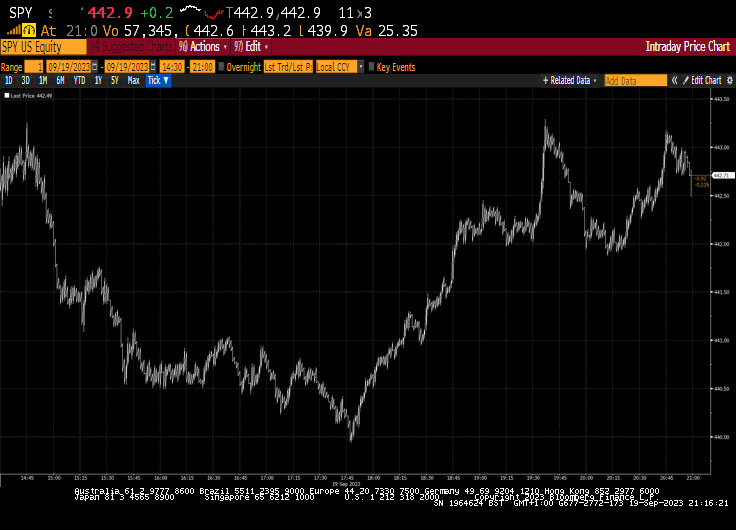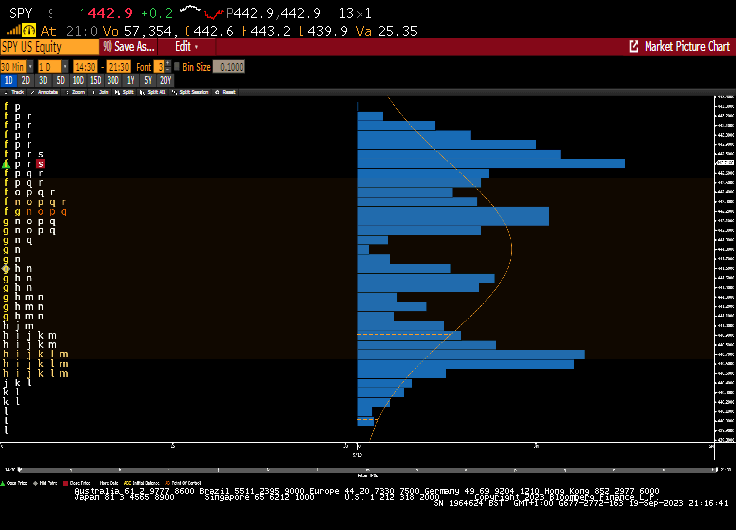Secret Behind Zero-Day Options Boom: a $1,000 Stock Bet Costs $1
This article from Bloomberg may be of interest to subscribers. Here is a section:
The best way to observe the phenomenon is in the difference between how much investors are actually spending on 0DTE and the notional value of those options — that is, how much exposure they are getting to the underlying asset via the contracts.
On the latter, the notional trading volume of 0DTE for the S&P 500 currently averages a beefy $516 billion a day, according to data compiled by Cboe Global Markets. Yet the actual amount of money paid out for them, or the premium, is only $520 million.
Put another way, traders are getting $1,000 of stock exposure for every dollar they spend on 0DTE. They would need to spend 10 times that to get the same equity position using derivatives with a longer lifespan, a Bloomberg analysis on Cboe’s data shows.
I find the zero day options (0DTE) sector to be interesting from a number of perspectives. The fact the totals committed to the market are about a 1/1000th of the notional value suggests the impact on the wider market is unlikely to be systemic.
This section from an article by Steve Sosnick on Interactive Brokers may also be of interest:
So, we find ourselves with a bifurcated options market. Roughly half the volume is concentrated in ultra-short-term expirations, meaning that VIX is calculated from a subset of the other half of the options universe. But that hardly means that VIX is broken. In fact, by removing much of the speculative activity one might assert that it has become more accurate and specialized. Those who trade VIX and the specific options upon which it is based haven’t gone anywhere. They remain active and laser-focused upon the relevant products. Just like everyone else, these traders might be right or wrong over time, but they suddenly haven’t gotten dumber.
The one argument that seems to hold water is that on down days we find more hedgers moving into shorter-term options than before. There is indeed improved liquidity in those options, and in a market where crises have once again become short-lived, they can indeed offer less expensive protection. But those who seek portfolio protection over the longer term and for larger sizes have no obvious reason to migrate away from VIX.
Since the volatility market has split up between ultra short-term and longer-dated options it is possible the peaks in the VIX may not be as high as they have been in the past during periods of panic in the market. If hedgers go shorter term than 30 days that will not be captured by the VIX calculation.
It has been several years since I looked at Market Profile charts. At the AAPTA conference over the weekend, one of the presentations was by Damon Pavlatos who runs an options trading shop in Chicago. His presentation focused on how he uses Market Profile in his day trading. One of the most successful Bund traders I knew, while I was on the Luxembourg sales team for Bloomberg, was also a big Market Profile advocate.
I mention this because of this article from Option Alpha focusing on the most successful strategies deployed in the 0DTE market over the last year. The most profitable trades were iron butterflys. That is a strategy using several layers purchases of puts and calls to bet on closing value of the Index. Since the whole purpose of market profile is to meld volume with price to give a picture of where the mid-point of control on the bell curve is. It is ideally suited to this kind of trading.


Today would not have been a profitable trade using a market profile technique because the line of control (the peak of the bell curve) recorded the least volume. That’s a good example of how a favourable trade set up is required for profitable outcomes.


